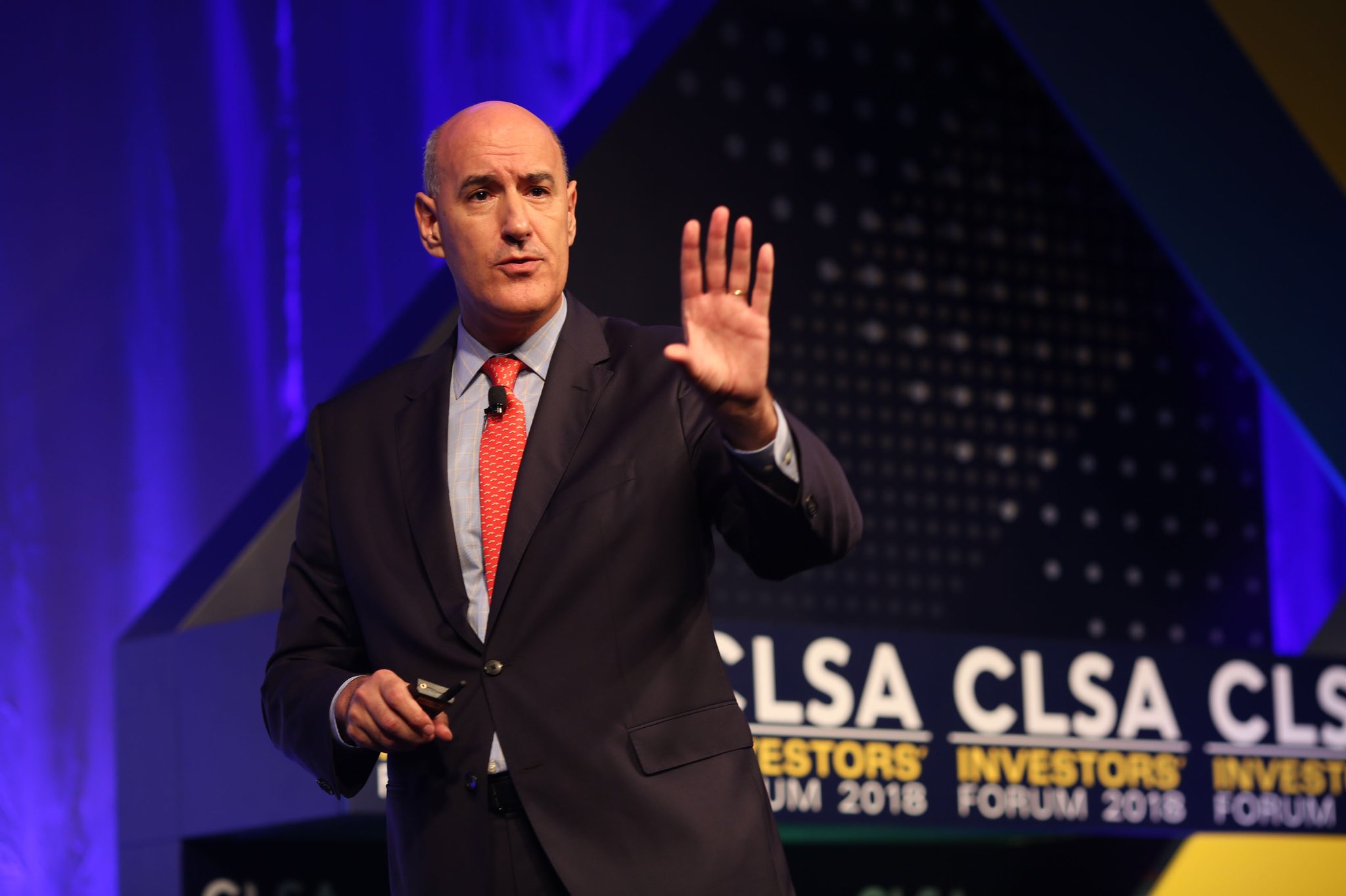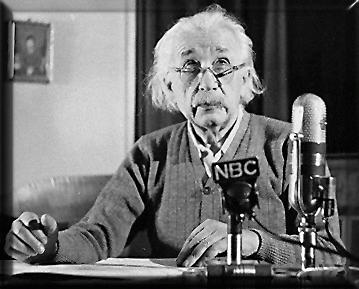
Last week I was contacted out of the blue by a college professor here in the U.S. who’s a huge Classic Rock fan. He was looking for insight as to why most FM stations in the format play such a small playlist of songs.
Our conversation turned into a discussion about demographics, especially radio’s fixation on the 25-54 year-old sweet spot, coveted by the ad agencies. My new academic friend mentioned how Baby Boomers – those 60+ are conspicuous consumers of everything. So, how could I explain the logic that so many national advertisers have typically dismissed these millions of people and their massive revenue?
It’s an uncomfortable conversation under the best of circumstances, but when you’re talking with someone who is smart, knowledgeable, and marketing savvy, you just feel like saying, “It is what it is,” a frustrating statement that’s grossly lacking, especially in the current environment.
 And to bring the topic to a point, Bill Jacobs forwarded me a new opinion piece in the New York Post – not by just another journalist, pundit, or radio consultant, but by Mauro Guillén. Or I should say Dr. Mauro Guillén.
And to bring the topic to a point, Bill Jacobs forwarded me a new opinion piece in the New York Post – not by just another journalist, pundit, or radio consultant, but by Mauro Guillén. Or I should say Dr. Mauro Guillén.
He’s a professor at the esteemed Wharton School, and the Director of the Penn Lauder Center for International Business Education and Research (CIBER). After earning his first degree in his native Spain, Guillén emigrated to the U.S. where he got his PhD from Yale.
The title of his essay leaves nothing to interpretation:
“COVID-19 will make the 60-plus generation more powerful than ever”
Even a media buyer or planner can interpret the wise Dr. Guillén’s pronouncement. His piece underlines the following fun facts about the world population.
- By 2030, the population over 60 will pass Millennials and Gen Z in Europe, China, Japan, and yes, the U.S.
- Every day, 12,000 Americans will turn 60; in China, it’s 54.000.
But it’s not just numbers of bodies – it’s their economic impact – sort of like “power ratios” in radio. Dr. Guillén believes the global pandemic has changed the demographic game, ushering in a new Renaissance for “The Gray Market,” those 60 and older who have suddenly become even more valuable than they were a year ago at this time.
Here are three compelling reasons why, according to the professor:
- The 60+ contingent here in America controls 80% of the net worth. That’s from a study by the Federal Reserve.
- The same study reveals how wealth is better spread out across these 60-plussers, whereas younger generations have considerably higher variance in their financial impact.
- The incomes of the 60+ crowd are more resilient because they’re more dependable – pensions, investment interest, and even holding down part-time gigs. Most are not sweating the job market like their Millennial and Gen Z counterparts.
Dr. Guillén points out that in times like these, seniors aren’t as susceptible to financial disruption as younger generations. In fact, because women dominate the 60+ group – notoriously better money managers than their male counterparts – there’s even more financial stability.
Another interesting consequence of COVID is that many 60+ Americans have brushed up on their tech skills, such as virtual meetings and yes, even TikTok.
TikTok.
A new buzzword in advertising is “ageless” – acknowledgment that chronological age is not always a determinant of attitudes, lifestyles, media habits, or purchasing patterns. You would think that a time when revenue is scarce, agencies and marketers would be actively searching for any source of sales and business activity.
In broadcast radio, this should all sound familiar because it’s the same dilemma. Demand for commercial inventory is probably at an all-time low, thanks to the rise of digital, coupled with the cruel impact of COVID.
Digital is a long bright spot, but many broadcast radio company assets are under-developed on these platforms – streams, podcasts, video, etc.
You’d think the pandemic would be cause for agency types to pause and reassess.
Instead, Dr. Guillén’s mostly hopeful opinion piece takes a sobering turn with this quote from AARP in a recent article:
“Boomers have the bucks, but advertisers don’t seem to care.”
 If you’re in radio, struggling to make Q3, let that one marinate for a minute.
If you’re in radio, struggling to make Q3, let that one marinate for a minute.
Then pick up the phone, call your state broadcaster association, the RAB, and the NAB and let them know you think the “gray market” is an opportunity that needs to be pursued.
I’ll add the statistical reality that broadcast radio’s audience is also aging – no matter what programmers, sales managers, and owners say to the contrary. The medium – like it or not – is “graying,” moving very much in-sync with where the population – and the money – is headed.
Data and financial realities ought to be the determinants of how marketers and content creators shape their plans for the rest of 2020 – and beyond. We’ve all been taught to fish where the fish are. And in this case, the biggest fish are far more likely to reside in a demographic that is plentiful, but also imaged as “old.”
Sometimes, nomenclature sets the tone. At Jacobs Media, we have been guilty of that, too. Years ago, we started to include generational crosstabs in all our Techsurveys, which proved to be a smart move. But our label for those born in 1946 or earlier – the “Silent Generation” – was vehemently questioned last year by one of our public radio stakeholders. An alternative term for this hardy group of seniors is “Greatest Generation,” a label we’re now using in all our studies. It sounds better, and is more descriptive of who these people are.
Inside most radio companies, there are heads of programming and sales. But perhaps the most objective corporate officer is the CFO. They’re the most dollar-agnostic people in every company. That’s because they respect the bottom line, no matter its makeup. I’ve never heard one yet complain that dollars are being generated by a less-than-desirable demographic.
And that’s a reminder: Maybe it’s time to finally start marketing broadcast radio as “ageless.”
I’ll leave you with a favorite quote from another pretty smart guy – Albert Einstein.
“Not everything that can be counted counts, and not everything that counts can be counted.”
Wonder if he ever wanted to work in radio.
- What To Do If Your Radio Station Goes Through A Midlife Crisis - April 25, 2025
- A 2020 Lesson?It Could All Be Gone In A Flash - April 24, 2025
- How AI Can Give Radio Personalities More…PERSONALITY - April 23, 2025




Hi Fred —
Of course you are free to call age cohorts whatever you want, as these nicknames are, in the end, rather arbitrary… but the term “Greatest Generation” has been fully associated with those born between 1901 and 1927 for over 20 years. The term was popularized by (but not coined by)the book by Tom Brokaw. https://en.wikipedia.org/wiki/Greatest_Generation
Whatever the objection was to “Silent Generation”, it is extremely well-established as a term of use for those born between 1928-1945. https://en.wikipedia.org/wiki/Silent_Generation
Larry
I might have been a bit too accommodating, Larry. As the person who protested “Silent” indicated, that generation has been anything but. Brokaw had good intentions, to be sure. “Greatest” has a much nicer ring to it. Thanks for the perspective on this. Maybe I should have also mentioned that Silents/Greatests have the greatest likelihood to vote. We’ll see how that plays out soon enough.
Excellent, Fred! Rather than Gray, I like to consider it “Silver & Gold.” As I reached 60, it was extremely clear so many of our peers love radio, information and music more than ever. A blind ear to that demand is dumb and leaves lots of dollars on low hanging trees. New, Custom Plug & Play formats will prove effective and valuable to audience & advertisers. As 94 year old Tony Bennett is famous for saying, “The Best is Yet to Come!”
Let’s hope Tony is right about this one, Clark. Thanks for chiming in.
This isn’t the first time the value of 60 plus has come up, and every other time the idea has been unanimously greeted by advertisers and agencies with a resounding yawn. How would coronavirus and its aftermath make that different?
Brad, history suggests you’re right, and that I’ve spent another 1,000 words barking up the same tree. But as COVID is changing so many things, and so many radio companies are in search mode for revenue, you never know.
Hmm.
How long before we see a station called
“Grey 101.5” ? Asking for a friend.
-Born in ’56
Not sure that’s the branding I would use, JC, but you never know. I remember the old “Format 41,” where they marketed their target listener to radio. Wondering about “Format 61” – for a friend, of course.
As y’all know, this concept has floated many times in the last 30 years. I recall attending “The Gold in theGray” seminar as a young pup in the biz. Highlighting even then the fact that 25-54 ignores the wealth demo. I can’t count the number of times media planners and CMOs responded with “but brand loyalty” (insert eye roll here). The assumption is that everyone over 60 will never change brands again, and never buy new technology. It’s a false premise, and yet it persists. Thanks from bringing this out again Fred. Maybe Covid, and the facts of marginal propensity to consume will win out this time. (and I mean that in the nicest possible way).
Tim, I sincerely hope you’re right. COVID is changing many things, and perhaps the illogic of 25-54 pandering will break through. Financially, broadcast radio would be wise to expand its revenue pool.
Thanks, Fred. I enjoyed our conversation last week. As you know, I am not in radio but if I owned a station or held a stake in the industry, I like to think that I would look at potential revenue in terms of dollar signs and not demographics. Correct me if I am wrong, but I believe that a $10 bill in the hands of a 25-year-old has no more value than a $10 bill in the hands of a 75-year-old. Every industry has blindspots (academia has a multitude), but if radio is fully aware of the existence of a pot of gold and ignores it instead of pursues it, not many people on the outside will shed a tear if the industry is overtaken by the likes of Spotify, Apple, Pandora, etc. I don’t understand the concept of undesirable dollars or markets but it’s clear that Classic Rock does. In the past three hours, my local station has played only three pre-1970 songs (two by the Stones and one by the Beatles); only one song by a female singer or act (Heart’s “Magic Man”), and none by a non-White artist or group–not even Hendrix. If we use this small sample size as a barometer, it is clear which markets are deemed undesirable.
Jeff, thanks for jumping into the fray. I thank you for pointing out an important topic – not just for radio execs, but for listeners and fans of the medium and the music – like you. And you so are spot on about the “isms” that impact FM radio. We’ve got a lot of “rethinking” to do. Thanks for reminding us what it’s like on the other side of the speakers.
Here’s one company that loves the 50+ listeners:
Nielsen.
The boomers love radio and they easily fill their demo quota month after month, year after year.
In fact they now overdeliver in the upper cells.
So, with the 50+ listeners effortlessly locked in—
This gives Nielsen lots more time to track down a 25-year guy who they can overweight.
Precisely. The fact that radio’s best demos are “graying,” you’d think we still wouldn’t be debating this, Marty.
Great article, as usual, and I would have to agree that the stations who cater to the 60+ demo, will win out over the next decade. In agreeing with Mr Coleman, I believe that the 60’s\70’s cliff needs to be dropped. I am willing to bet, if carefully researched, the bulk of classic rock consumed by younger listeners on streaming services falls into that area that is not being serviced by classic rock radio. Now, about those small playlists…
The older stuff actually tests very well among the young, many of whom are seeking a true Classic Rock experience. Thanks, Kurt.
Never mind the agencies. Dr. Guillén’s article needs to be in the hands of the CEOs of every major radio advertiser.
We all know the agencies follow the instructions of the advertiser. It’s pointless to lobby them. But start with the CEOs, then the VPs/Marketing, VPs/Advertising … anyone high up the food chain who has a say in how the ad budget is allocated.
A variation of an old adage comes to mind:
“If you don’t advertise your business TO THE PEOPLE WHO HAVE MONEY TO SPEND WITH YOU, nothing will happen … until you put out the “closed” sign for the last time because none of the youth you advertised to could afford to spend any of their limited money with you.”
(Yeah, I guess that’s a little too long for a motivational poster, huh?)
But you’ve got the right idea. The radio industry needs to embrace this opportunity and make a concerted effort to after it. Otherwise, this is just another blog post on another Monday. Thanks for the comment, K.M.
Nice article Fred!
Small market program and operations director here. I can tell you many of us have been selling the 60 plus (or maybe 50 plus) demo effectively for a while now. We are the local information source for our smaller towns. Local news and sports draws a lot of older, wealthier, retired boomer listeners that furniture stores, HVAC companies, financial advisors, and many others really want to target. In fact, we made our sales goals this past month. While event advertising is most definitely down, we aren’t losing from a lot of these other sources. They are all buying “information programming.” Political dollars haven’t hurt, but this is the meat and potatoes of our advertiser base right now. Enjoy the columns.
Glad it’s working, Jason. Thanks for sharing the story & best of luck as we get through this.